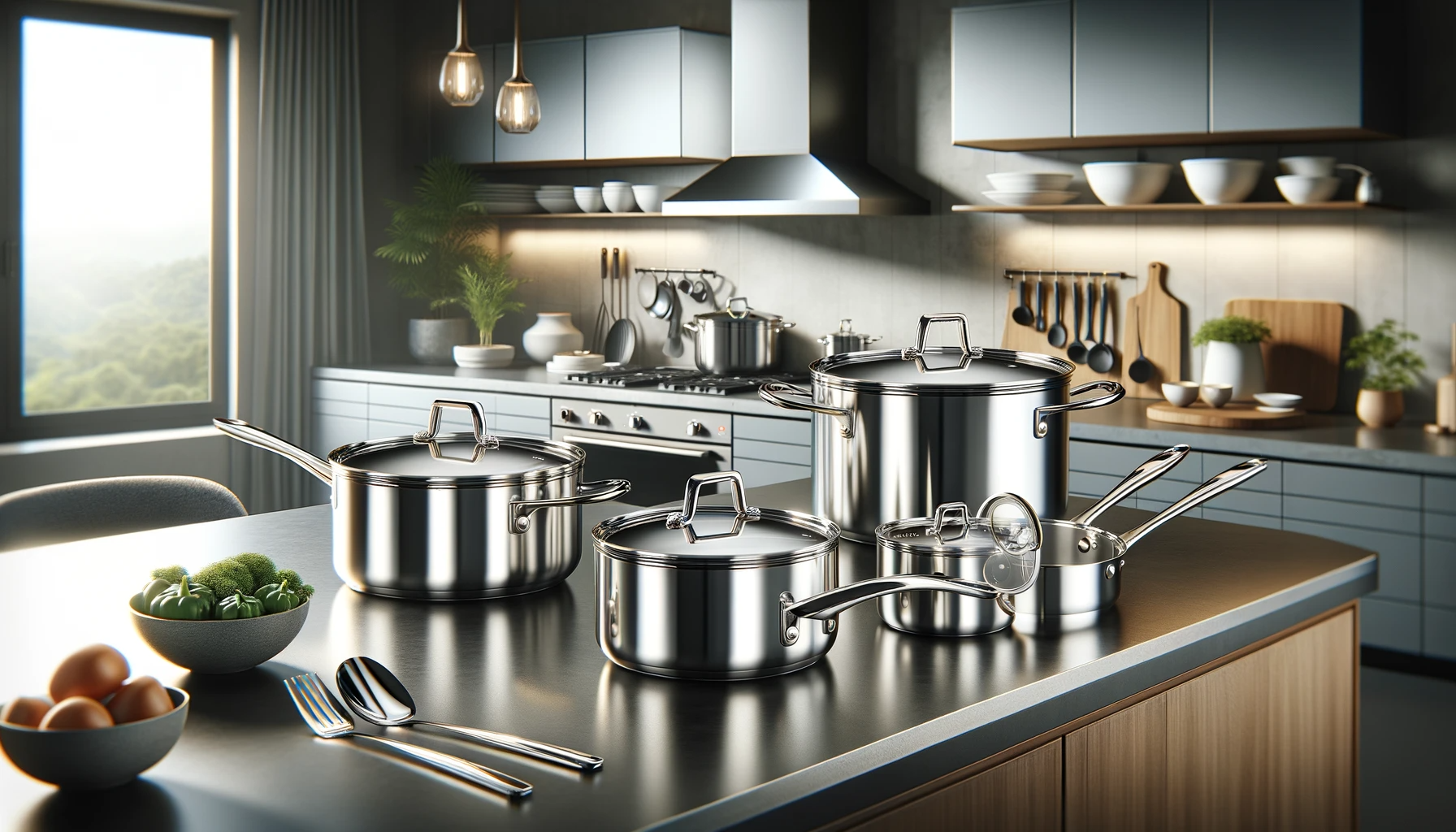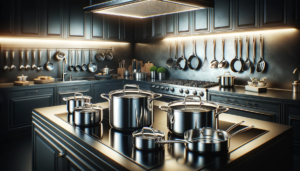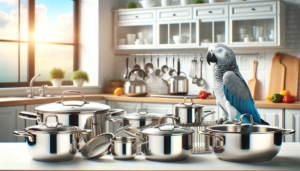Is a $115 saucepan or $155 skillet from the trendy startup Caraway cookware really worth it? Or are you better off with tried and true staples from kitchen mainstays like All-Clad and Cuisinart?
As a longtime cooking enthusiast and cookware reviewer, I was eager to test drive Caraway’s new stainless steel pans to see if their sleek styling translated into substance for everyday stovetop use.
After cooking with Caraway’s latest release for the past month, I’m ready to share my thoughts.
From pouring and handling quirks to quality control concerns, let’s dive into this comprehensive review.
Is Caraway Stainless Steel Cookware Really Worth It?
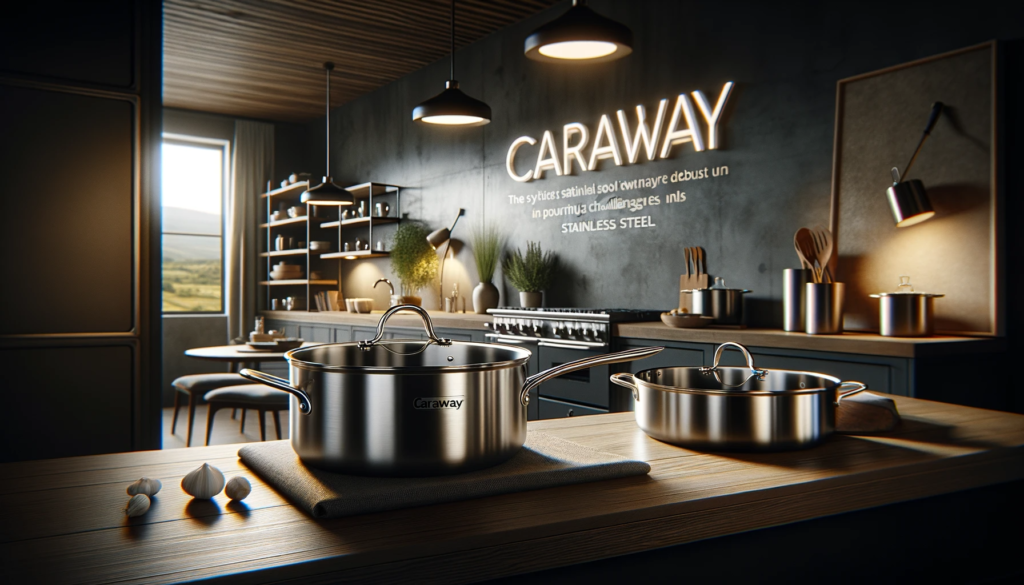
The short answer based on my testing and experience: Not yet – but show potential once a few key issues get resolved in future iterations.
Caraway’s stainless steel debut offers alluring style at reasonable prices given the brand cachet.
However, pouring challenges, slippery handles, and quality concerns uncovered currently make established players a more seamless and risk-adverse option for introducing stainless steel into your kitchen.
As a “Gen 1” launch, I hope to see Caraway refine and perfect this line into a collection with broader, mainstream appeal.
In the following sections we’ll analyze in more detail Caraway’s inaugural foray into stainless steel cookware to better understand the pros, cons, and open optimization pathways as this young brand expands beyond its core ceramic offerings.
Overview of Caraway’s New Stainless Steel Line
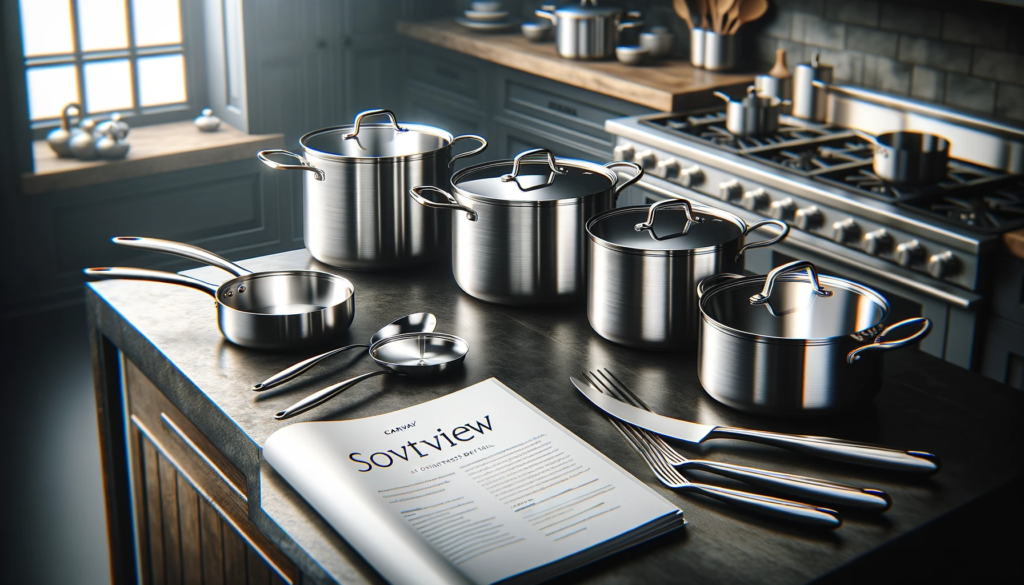
Caraway launched its first stainless steel cookware line in 2023, expanding beyond its popular ceramic non-stick offerings that the brand has become known for since its founding in 2018.
Over the past five years, Caraway has built a reputation for its stylish and high-performing ceramic-coated aluminum pans marketed as a non-toxic alternative to traditional Teflon non-stick.
The company found a niche by selling directly to consumers online, cutting out retail markups to offer quality ceramic-coated cookware at relatively affordable price points.
They also differentiated with sleek, contemporary style options not found among legacy players like Calphalon and Cuisinart.
The launch of this stainless steel collection marks Caraway’s first departure from its ceramic non-stick roots.
But it makes sense as a brand expansion after saturating much of the ceramic cookware niche.
Stainless steel opens opportunities to appeal to more mainstream home cooks loyal to traditional skillet and pot materials.
The design of the lids, handles, and shape of the pots and pans mirrors their existing ceramic non-stick collections.
The handles offer the same gently curved silhouette with a high-shine polished finish.
And the lids feature a subtle ridge around the edge reminiscent of the flatter ceramic lids.
But while the aesthetic remains familiar, the materials and cooking properties differ significantly from Caraway’s classic offerings.
These pans are made from 5-ply stainless steel with two outer layers of steel sandwiching an inner 3-layer aluminum core.
This clad construction allows the heat conductivity and responsiveness of an aluminum pan while granting the durability and sear-friendly surface of stainless steel.
The exterior also has an attractive brushed finish that resists fingerprints and smudges to maintain a cleaner appearance during cooking.
Caraway uses a unique, non-toxic passivation process to treat the raw stainless steel during manufacturing.
Passivation removes free iron from the steel’s surface, creating a protective chromium oxide layer to prevent corrosion.
Most brands use harsh chemical baths, like nitric acid, to passivate stainless steel.
But Caraway’s eco-friendly approach relies on washing cookware in a citric acid solution.
Citric acid comes from renewable plant sources, is biodegradable, and eliminates the need for a secondary process to remove chemical residue after passivation.
Plus, citric acid is gentle enough for at-home use in DIY cleaners.
This innovative passivation process forms an invisible barrier around the pans to extend their life.
It also makes Caraway’s stainless steel easier to clean and maintain by preventing buildup, discoloration, and mineral deposits from water or foods.
Because citric acid qualifies as non-toxic, this process results in durable, corrosion-resistant, chemical-free pans designed to last a lifetime.
Performance of Caraway Stainless Steel
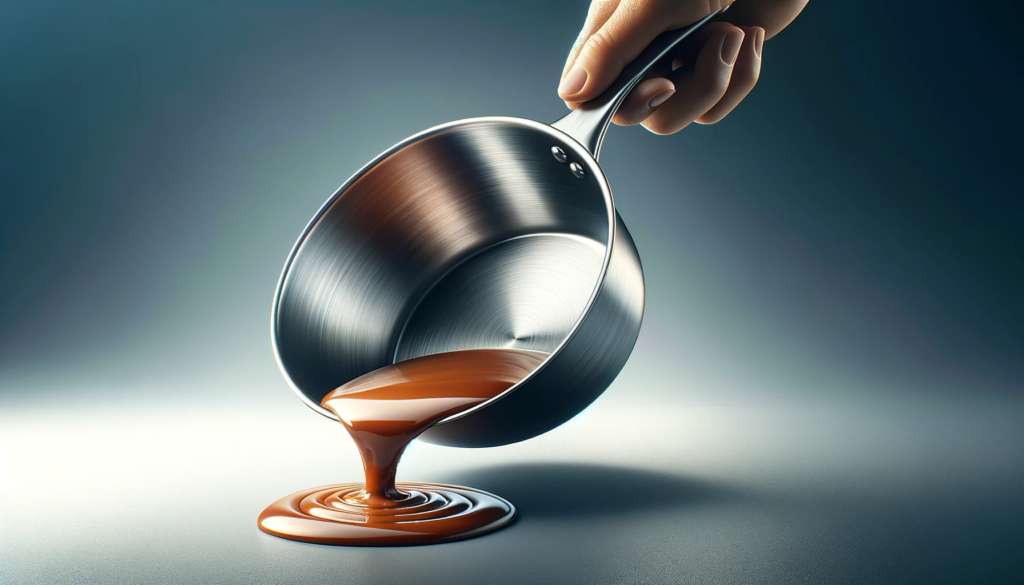
Performance-wise, this cookware is thick, heavy, and conducts heat evenly like any fully clad stainless steel I’ve tested.
The 5-ply construction also allows for responsiveness when adjusting temperature, unlike cheaper stainless steel that takes longer to heat up and cool down once hot.
So whether simmering tomato sauce for hours or searing a steak to med-rare over high heat, these pans transition seamlessly across the stovetop’s range of temperatures.
However, my main complaints stem from some design oversights related to function.
For example, the rims are not flared.
So when tilting the pan to pour out pasta water or sauce, liquid often runs down the sides leaving a mess on the stove or countertop.
Without flared edges to guide the flow, pouring requires an especially steady hand.
And even then, you likely end up with drips along the exterior.
This undermines convenience for common cooking tasks where neatly pouring liquids into a separate vessel is needed.
Flared rims represent such established design practice that their absence stands out.
And it surprised me given how thoughtful some of Caraway’s other product features seem.
Additionally, the rounded handles unexpectedly rotate in your hand when tilting the pan, which I noticed happening several times.
The most concerning scenario was when pouring freshly cooked pasta into a colander in the sink.
As I rotated the saucepan, the handle turned downward in my grip.
Thankfully, I adjusted in time and avoided a clumsy spill or burn.
But the potential is there for real accidents if you don’t have a solid grasp to counteract the rotation caused by the handle’s shape and smooth finish.
I could foresee the same issue arising when trying to scrub the pan clean after cooking.
If you’ve got wet, soapy hands grasping the rounded handle, and it starts to twist downward as you apply pressure washing the pan surface, you could end up hurting your wrist or dropping the heavy pan.
The rotation seems to result from a combination of the handle’s smooth curved shaping and placement further from the body of the pan.
Having a straight handle positioned closer to the pan would likely prevent this unwanted movement.
Quality Control Concerns

I also question Caraway’s quality control processes for this new stainless steel product line after receiving a saucepan with a rather badly dented handle right out of the box.
While the occasional manufacturing defect falls within the norms of any mass-produced consumer product, it was still disappointing given Caraway’s reputation for beautiful cookware.
Seeing this kind of damage raises concerns about deficiencies in their inspection procedures or handling practices during manufacturing and shipping.
I worry production volumes may be scaled too quickly amid growth and excess inventory sitting unpacked for long stretches before sale.
Or increased outsourcing to meet sales demand could make maintaining strict quality control across multiple factories and transit routes more difficult.
Whatever the cause, for a small brand charging premium prices, such obvious aesthetic flaws should not leave the warehouse to end up in customers’ hands.
It makes me question if expanding into stainless steel is stretching Caraway’s capabilities too thin only five years into business.
Perhaps investing in infrastructure and oversight to sustain more diverse product lines would better serve them in the long run compared to rushing new offerings to market.
Of course, the dent was purely cosmetic and did not impact actual cooking performance.
But first impressions matter when building consumer confidence and loyalty for a young company with big growth ambitions.
Seeing this handle defect upon unboxing the pan does impact my faith in backing their stainless steel cookware versus other established players.
It poses the question – if easy-to-catch physical damage slipped through, what other corners could be cut that I as a customer cannot see?
Cost and Value Considerations
Caraway stainless steel cookware lands at a medium price point, costing more than entry-level brands like Tramontina or Rachael Ray, but less than premium players like All-Clad or Mauviel.
For example, the 3-quart saucepan retails on their website for $115, while the 10-inch skillet comes in at $155.
And the 5-piece cookware set including those two pans plus a sauté pan and Dutch oven sells for $395.
So while not cheap, Caraway stainless offers attractive styling from a trendy direct-to-consumer brand at a more affordable price than comparable high-end options.
Their ceramic non-stick pots and pans cater to a similar demographic – budget-conscious shoppers who value modern aesthetics and don’t mind spending a bit more for products aligning with their lifestyle sensibilities.
In expanding beyond non-stick into stainless steel, Caraway is now competing more directly against surging DTC companies like Made In Cookware and Brigade Kitchenware.
These brands offer similar 5-ply stainless steel construction with clad aluminum cores at comparable price points to Caraway.
When considering performance and quality control feedback, Brigade and Made In may edge out Caraway for those simply seeking high functioning stainless steel cookware in the $100 to $200 per piece range.
However, the limitations highlighted earlier around tricky pouring, slippery handles, and quality concerns do make me hesitate on Caraway’s value proposition.
Visually, the cookware looks stunning in product photos.
And the brushed stainless and polished handles bring nice design-forward elegance to bland old stainless steel.
But in actual use, the pouring and ergonomic issues detract from that styling advantage over traditional players like All-Clad, Le Creuset or Cuisinart.
If valuing form over function, then the visual appeal alone could possibly justify Caraway’s pricing.
For me though, performance matters most for items functioning daily in my kitchen.
And while troublesome handles could be overcome by adapting your grip and pour technique, having to consciously adjust your cooking habits around your cookware’s flaws seems counterintuitive.
Conclusion
To wrap up this review on Caraway’s new stainless steel cookware line – is it worth purchasing?
There are certainly some pros around aesthetics, with Caraway’s signature modern styling applied nicely to the classic stainless steel material.
Performance-wise, the 5-ply construction conducts heat evenly for reliable everyday cooking tasks like simmering sauces or sautéing vegetables.
And the eco-friendly passivation process is a smart innovation that sets their offering apart from a crowded cookware field.
However, for me, some of the limitations highlighted cut against backing this line as a worthwhile investment – for now, at least.
As Caraway’s inaugural stainless steel products, I view these pans as a “Gen 1” attempt with room for refinements in later iterations.
So if you adore the styling and want stainless steel cookware aligned to contemporary kitchen aesthetics popular among younger urban dwellers and modern decor blogs, sure, roll the dice on Caraway.
Just don’t expect the performance to rival longtime category leaders.
But otherwise, I would still recommend established players like All-Clad or Made In for comparable or cheaper prices with smoother pouring, comfortable handles, and the years of learning built into their design.
Caraway makes gorgeous ceramic-coated pots and pans.
Perhaps they should stick to perfecting this specialty before splitting focus across divergent cookware materials.
For consumers seeking their first set of stainless steel cookware, other brands offer similar quality construction without the ergonomic frustrations – allowing you to focus more mental bandwidth on navigating the nuances of cooking with stainless steel rather than compensating for equipment limitations.
